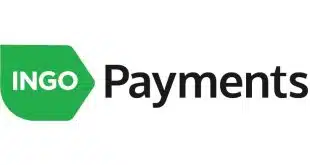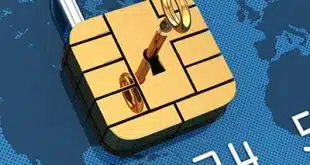Samsung Electronics Co. Ltd. is joining the mobile-wallet and payments fray with its expected launch this summer of Samsung Pay, a service that uses near-field communication (NFC) and technology from LoopPay Inc. it recently acquired.
Samsung Pay, available on the coming Galaxy S6 and S6 Edge smart phones this summer, could stand out from competitors like Apple Inc.’s Apple Pay, which exclusively uses NFC to make a mobile payment, because of the inclusion of LoopPay’s magnetic-stripe radio-field technology. Samsung announced Samsung Pay and the smart phones at the Mobile World Congress event Sunday in Barcelona, Spain.
LoopPay works like this. Using the LoopPay mobile wallet, a registered user presses a button on a LoopPay fob or within the app on a smart phone held in a LoopPay case to initiate a transaction. She selects the payment card and presses the Tap to Pay button. Data is wirelessly transmitted to the point-of-sale reader using a magnetic field that any POS terminal can read. The signal emulates the same magnetic field change as when a mag-stripe card is passed through a reader. Samsung is calling this “Magnetic Secure Transmission.”
That ability to use existing mag-stripe readers in POS terminals stands in contrast to Apple Pay, which requires an NFC terminal. Estimates peg the number of contactless NFC POS terminals at approximately 220,000. There are an estimated 8 million POS terminals in the United States that accept mag-stripe payments.
But consumers may have some confusion about how to use Samsung Pay with a mag-stripe reader, says Pascal Caillon, general manager of North America for U.K.-based Proxama, a mobile-commerce technology company. “For each different POS [terminal], consumers will have to determine where to place the handset next to the mag-stripe reader to conduct the transaction, leading to possible confusion or fear of trying it,” Caillon says. “Consumers really don’t know where to bring the phone to.”
With NFC, the mobile-wallet app automatically activates when the smart phone is near an NFC reader.
Samsung Pay’s upcoming debut will come just a few months before the U.S. payment card industry begins its monumental shift to EMV chip card payments beginning Oct. 1. EMV transactions require consumers to dip their credit and debit cards into a POS terminal, bypassing the magnetic-stripe reader.
While Samsung’s move in the highly competitive mobile-wallet arena has potential, it may not pan out as well as the handset maker hopes in the long term, analysts suggest.
“They’re putting a lot of energy behind the LoopPay acquisition, which is great in the short term,” says Thad Peterson, senior analyst at Boston-based Aite Group LLC. But over time, “NFC is the long-term solution.”
Another hurdle may be Samsung’s lack of experience building a payments ecosystem, such as Apple has done, Nick Holland a senior analyst who follows mobile payments at Javelin Strategy & Research, a Pleasanton, Calif.-based consultancy, tells Digital Transactions News.
“It’s impressive technologically,” Holland says, “but that’s what Samsung is good at. But the problem is they’re not ecosystem builders.”
The potential hurdle is more apparent with Google Inc.’s announcement last week that it was buying Softcard, and struck deals with three major U.S. wireless networks—Softcard’s owners—to place the Google Wallet on upcoming Android smart phones.
“The Softcard deal shows Google is far more serious than they have been for some time,” Holland says. “Their absence was not indicative of them leaving, but regrouping and working out their next steps.”
As for the payments industry overall, the advent of Samsung Pay, and its ilk, is a positive for merchant acquirers, Rick Oglesby senior researcher at Centennial, Colo.-based Double Diamond Payments Research, tells Digital Transactions News. “These wallets are all converging around Visa, MasterCard standards,” Oglesby says. “There are not new transaction methods that have to happen at the point of sale. Now we know the payment transactions will run through legacy networks.”
Samsung is working with Visa Inc. and MasterCard Inc. to enable tokenization protocols that replace sensitive payment information with a unique code.
As one of the largest global smart-phone manufacturers, Samsung needs to ensure its devices offer competitive features, such as mobile payments, Oglesby says. “They hope to create this new revenue stream,” he says. The competition for Samsung is to get consumers to buy their smart phones. “LoopPay makes a lot of sense for the simple reason of maximizing the number of transactions you can run.”
While Samsung Pay can be used at most POS terminals, not all merchants may want that. When Apple Pay debuted, retailers CVS and Rite-Aid turned off the NFC component in their POS terminals because they intend to offer a rival mobile wallet called CurrentC. Developed by the Merchant Customer Exchange (MCX)—a group of retailers hoping to leverage lower payment processing costs and consumer spending data—CurrentC is still in testing.
Merchants wanting to thwart Samsung Pay won’t be able to turn off the magnetic-stripe readers in their devices, Oglesby says, but they might be able to identify tapped transactions and block them. “It will be interesting to see what the MCX merchants decide,” he says.





